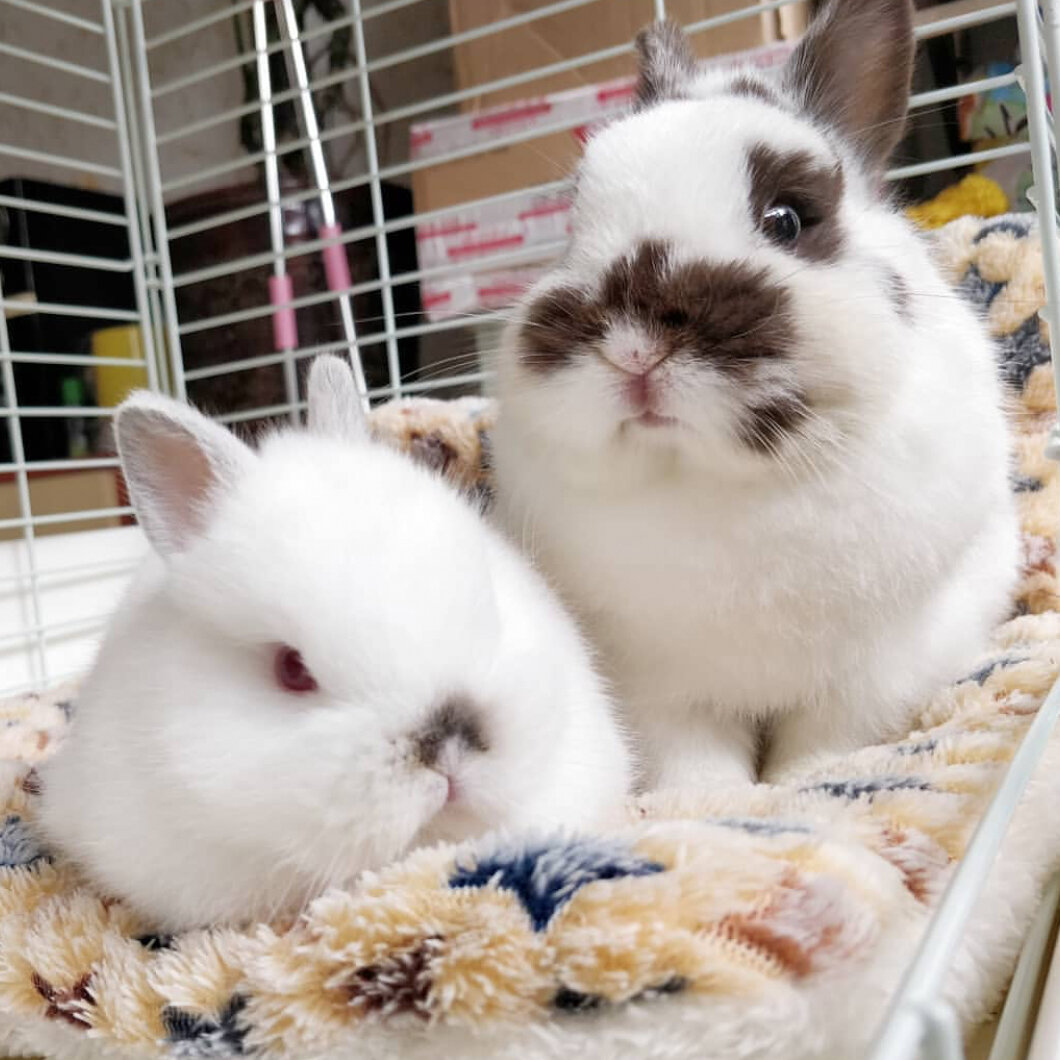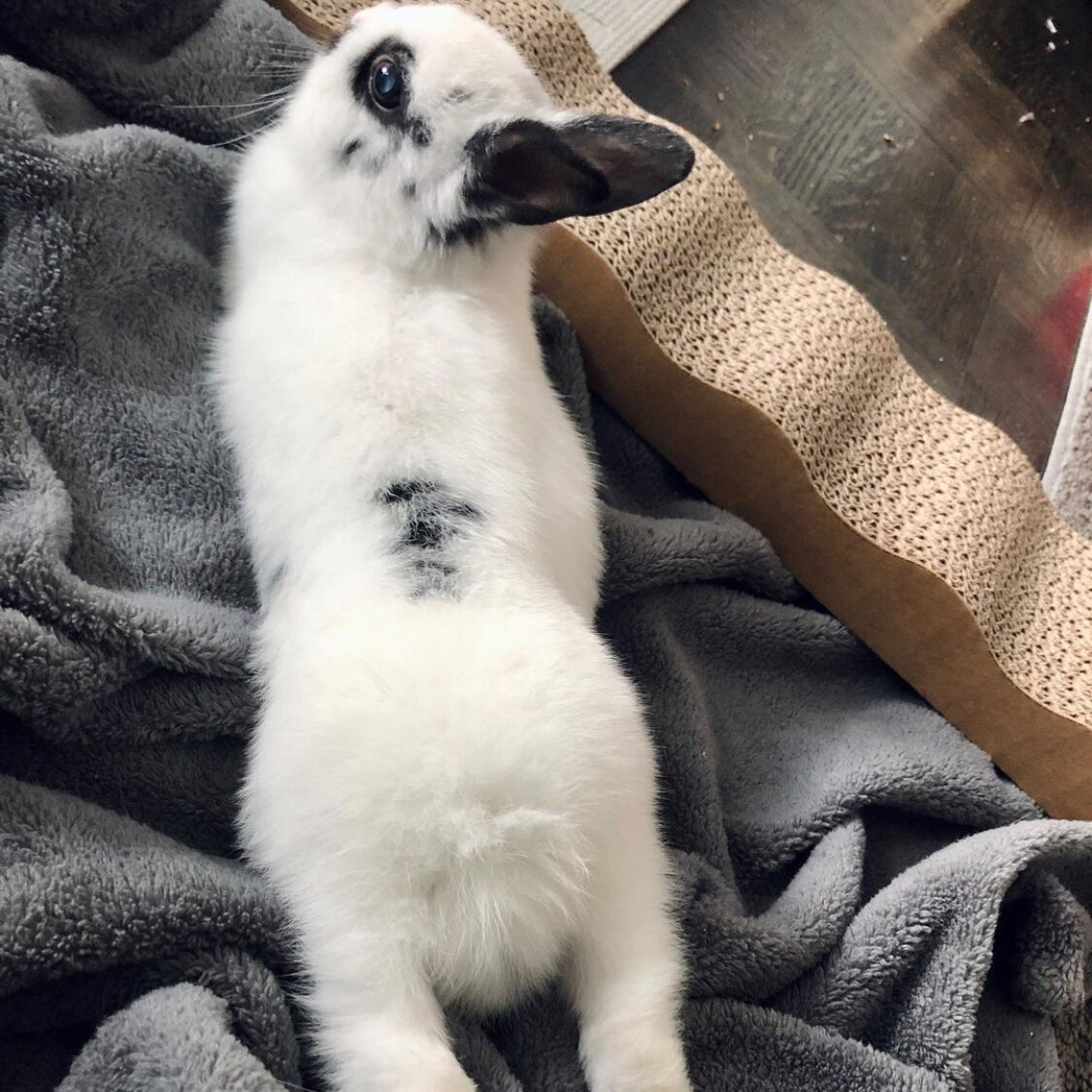The Varieties and Genetics of White Rabbits
Frosty mornings and sugary soft snow flurries make me think about the beautiful, yet elusive white, rabbits. Have you ever wondered about the different varieties and how the genetics work? What’s the difference between ruby eyes and blue? Why do some white rabbits have spots? And which variety is the cutest?
This article covers simple genetic basics for all the white coated rabbits. It is great for curious pet owners as well as beginning breeders or 4Her’s wanting to expand their knowledge. Even breeders who do not work in these colors could learn something new here. I’ve given links for more in depth articles for breeders who would like to start a breeding program including some of these snowy beauties. My knowledge focuses on Netherland Dwarfs, as that is my specialty, but the same genetics are shared by all breeds of domestic rabbits and the genotypes generally affect coat color similarly.
Blue-eyed White and Ruby-eyed White
You will commonly see breeders abbreviate ruby-eyed white and blue-eyed white as REW and BEW respectively. Although they both have all white fur, the genes involved in their coloration are actually different.
The Vienna or “V’ gene is what creates BEWs. A regularly colored rabbit without blue eyes will have two ‘VV’ alleles in the V gene position, a blue-eyed white rabbit will have two recessive ‘vv’ alleles present. This overrides all other genetic code for color and markings and creates an all white rabbit with clear blue eyes. If the rabbit has one dominant ‘V’ allele and one recessive ‘v’, denoted by Vv, it may be a Vienna marked rabbit, or may show no differences from a typically colored rabbit. That means that a rabbit with a code of ‘Vv’ could be completely hiding the recessive ‘v’ and show no white marking at all.
Vienna marked rabbits will often have white banding or what is sometimes referred to as “dutch markings” on the head and feet. They can have blue or brown eyes or may even have a combination or marbled looking eyes.
Photo credit to @oldgardenhouserabbitry
If you’d like to read more about the V gene and how to start a breeding program for BEW or Vienna marked rabbits check out this article by Old Garden House Rabbitry.
In comparison, ruby-eyed white rabbits are true albino rabbits. Their coloring is affected by the genes at the C locus. Without getting too deep into all the coloration differences that can happen within the C genes, (there are many!) know that a REW rabbit will inherit the most recessive combination of two 'c’ alleles. This combination will mask all other coloration of the skin and eyes and show as fully white albino rabbit with eyes that are ruby in the center and have a lighter pink iris.
The C gene is also responsible for chinchilla, shaded, seal, sable, Himilayan, and many more color varieties. If you’d like to read more in depth about REW rabbits and the C gene, this article by The Nature Trail is a good reference.
I’ve heard that there are people out there who don’t like the ruby, “red” eyes. They think they’re…creepy. I just have to ask “Are you crazy!?” What is cuter than ruby PINK eyes? There is an entire cast of Japanese comic characters based on this adorable attribute. I dare you to try to find an anime or manga series that doesn’t include a character with pink eyes.
What BEW and REWs do have in common is that they are both the most recessive gene pattern in their respective locations in the sequence. That means that they are harder to create and take a lot of hard work and dedication on the breeder’s part in keeping their lines healthy and strong.
Other Forms of (Mostly) White Rabbits
Himalayan
There are several varieties of white rabbits that have small spots of other colors. We have actually already touched on one of them when we talked about the C genes and mentioned Himalayan. Also known as a Himmie, the rabbit has a set of two ‘ch’ alleles within the C locus, denoted by ‘chch’. (The ‘ch’ gene is one level more dominant than ‘c’ which makes a REW.) The body color is all white except on the points which can be black, blue, chocolate, lilac, etc. (The point color is determined by other genes in play.) The points include the ears, nose, feet, and tail. The eyes will be ruby and have a lighter pink iris just like in REW.
A “properly shaded” Himmie rabbit, according the the ARBA Standard of Perfection, will have consistent shading on the nose, ears, all four limbs, and the tail. All points should be deeply colored without stray white hairs.
*Photo credit to Cole’s Rabbits
Want to dive in even deeper? There is something special that can happen at the ‘C’ locus when a rabbit receives one allele that creates REW and one that creates Himmies. The code would look like this: ‘chc'. It creates a combination rabbit! Rarely seen because they are not showable, they still turn out extremely beautiful.
Notice the red eyes and slight nose shading. We know the ‘C’ genes are involved because of the pink eye color but it isn’t quite a Himmie because most of the shading is missing. The partial dominance of the ‘C’ genes makes it possible for both to show through at once. This rabbit is most likely ‘chc'.
*Photo credit to @kezaneko
Brokens and Charlies
A broken rabbit’s coat color is being modified by the ‘En’ gene. Broken is actually the dominant trait (instead of being the recessive trait as in many other white rabbits.) Rabbits who are not broken, and display normal coloration, have two recessive alleles ‘enen’. Having an allele combination of ‘Enen’ will created a spotted pattern on the rabbit where much of the rabbit is white with a “blanket” or “butterfly” pattern of the rabbit’s original coloring showing through.
When showing broken rabbits there are specific requirements for each breed, but most of them call for as even as possible coloration that mirrors from one half of the rabbit to the other. It also calls for the rabbit coloring to cover between 10-70 percent of the animal’s coat. The eyes will be determined by the other coloration genes of the rabbit, so a darker colored rabbit will have brown eyes, while a dilute color should have grey. The ‘En’ gene does not affect eye color as in BEW and REW. Broken rabbits can be shown in any approved color within the breed standard so you will see everything from black to lilac. I’ve even seen a couple broken fawns and torts out there.
Now what happens if a rabbit receives two of the dominant En alleles from it’s parents? ‘EnEn’ will create what is known as a Charlie. It will be a mostly white rabbit with less than 10% spotting. Charlie’s were actually named for Charlie Chaplin and his famous moustache! They generally have most of their patterning focused on the ears, around the eyes, and near the nose. There may be a few sporadic spots down the back as well. Look at the photos below and see if you can tell the difference between the Broken’s and Charlie’s.
That’s it! You now have knowledge about all of the (current) varieties of white rabbits. I’ve probably already given myself away in the article, but now I want to know which one is YOUR favorite. Drop a comment below with your favorite white rabbit variety and extra points for your favorite winter themed bunny name!














